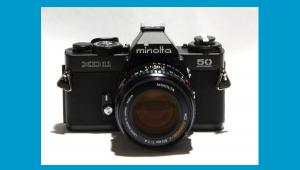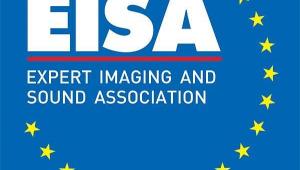New Kodak Image Sensor Technology
Eastman Kodak Company (NYSE:EK) has introduced a new image sensor technology
that is said to provides a significant increase in sensitivity to light when
compared to current sensor designs. With this new technology, users will realize
a 2x to 4x increase in sensitivity (from one to two photographic stops), which
will improve performance when taking pictures under low light and reduce motion
blur when imaging moving subjects. In addition, this technology enables the
design of smaller pixels (leading to higher resolutions in a given optical format)
while retaining imaging performance.
This breakthrough advances an existing Kodak technology that has become a standard in digital imaging. Today, the design of almost all color image sensors is based on the "Bayer Pattern," an arrangement of red, green, and blue pixels that was first developed by Kodak Scientist Dr. Bryce Bayer in 1976. In this design, half of the pixels on the sensor are used to collect green light, with the remaining pixels split evenly between sensitivity to red and blue light. After exposure, software reconstructs a full color signal for each pixel in the final image.
Kodak's new proprietary technology builds on the existing Bayer Pattern by adding panchromatic, or "clear" pixels to the red, green, and blue pixels already on the sensor. Since these pixels are sensitive to all wavelengths of visible light, they collect a significantly higher proportion of the light striking the sensor. The remaining red, green, and blue pixels are then used to record the color information of the scene.
To reconstruct a full color image, Kodak has also developed new software algorithms specifically designed to work with the raw data generated from these new image sensors. These sophisticated algorithms use the more sensitive panchromatic pixels to act as the luminance channel of the final image, and derive chrominance information from the color pixels on the sensor. Leveraging over 30 years of Kodak image science, these new algorithms support the increased sensitivity provided by these new pixel patterns, while retaining the overall image quality and color fidelity required by customers.
Kodak is beginning to work with a number of leading companies to implement this new technology in system-wide solutions and to streamline the design-in process.
Kodak is developing CMOS sensors using this technology for consumer markets such as digital still cameras and camera phones. As the technology is appropriate for use with both CCD and CMOS image sensors, however, its use can be expanded across Kodak's full portfolio of image sensors, including products targeted to applied imaging markets such as industrial and scientific imaging. The first Kodak sensor to use this technology is expected to be available for sampling in the first quarter of 2008.
For more information on Kodak's entire image sensor product line, please visit www.kodak.com/go/imagers.
This breakthrough advances an existing Kodak technology that has become a standard in digital imaging. Today, the design of almost all color image sensors is based on the "Bayer Pattern," an arrangement of red, green, and blue pixels that was first developed by Kodak Scientist Dr. Bryce Bayer in 1976. In this design, half of the pixels on the sensor are used to collect green light, with the remaining pixels split evenly between sensitivity to red and blue light. After exposure, software reconstructs a full color signal for each pixel in the final image.
Kodak's new proprietary technology builds on the existing Bayer Pattern by adding panchromatic, or "clear" pixels to the red, green, and blue pixels already on the sensor. Since these pixels are sensitive to all wavelengths of visible light, they collect a significantly higher proportion of the light striking the sensor. The remaining red, green, and blue pixels are then used to record the color information of the scene.
To reconstruct a full color image, Kodak has also developed new software algorithms specifically designed to work with the raw data generated from these new image sensors. These sophisticated algorithms use the more sensitive panchromatic pixels to act as the luminance channel of the final image, and derive chrominance information from the color pixels on the sensor. Leveraging over 30 years of Kodak image science, these new algorithms support the increased sensitivity provided by these new pixel patterns, while retaining the overall image quality and color fidelity required by customers.
Kodak is beginning to work with a number of leading companies to implement this new technology in system-wide solutions and to streamline the design-in process.
Kodak is developing CMOS sensors using this technology for consumer markets such as digital still cameras and camera phones. As the technology is appropriate for use with both CCD and CMOS image sensors, however, its use can be expanded across Kodak's full portfolio of image sensors, including products targeted to applied imaging markets such as industrial and scientific imaging. The first Kodak sensor to use this technology is expected to be available for sampling in the first quarter of 2008.
For more information on Kodak's entire image sensor product line, please visit www.kodak.com/go/imagers.
More information about Kodak (NYSE: EK) is available at www.kodak.com.
- Log in or register to post comments

















































